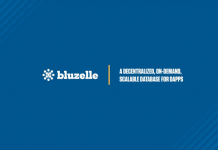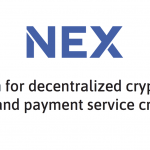Sensay is an interoperable messaging platform for matching and routing people for conversation across major consumer messenger applications.
PROJECT OVERVIEW.
Sensay is an interoperable messaging platform for matching and routing people for conversation across major consumer messenger applications, including the most popular mobile messenger: SMS, commonly known as “text messaging.”
The platform can be used for communication across different messaging apps, as an information repository, and to find relevant knowledge outside of individual networks, while monetizing individual knowledge contributions with sense tokens.
BACKGROUND.
Humans have a lot to offer each other, whether that is passed on through their experience, creativity or empathy. Today it’s easy to find information, but to create a connection is much more valuable and lasting. We, as human, have a deep need to connect with others and share our life experiences. Technically we’re more connected than ever, yet to some extent it is more difficult than it has ever been.
Social media especially has created a divide in the way we as humans interact with each other. Our noses in our phones, we stumble through the world rarely making eye contact. We ask Google instead of each other, we plan trips through text messages and maps instead of sitting in a room together. We keep our entire lives locked up on tiny computers in our pockets. We sometimes forget how to make actual human connections. This slow burning fire strongly affects those who already have trouble making connections, as more and more people they would make a connection with withdrawal into their machines.
While Sensay can’t get people in the same room, it can get them talking. Sensay users are already chatting about a wide range of topics, from casual relationship advice, common interests like discovering new games and music to more serious life needs around jobs and financial planning.
Founded 3 years ago, the platform has connected millions of users around the world by providing digital coins in exchange for information, knowledge, and connection. Now Sensay are offering a new digital token called Sense that will encourage new users and developers to get in on the action, in exchange for Sense.
In a recent interview, Founder and CEO, Crystal Rose said, “Our goal is to put everyone’s brain on the blockchain… Our platform enables these free agent[s] to set up a digital shop for their brain. So you take all the skills, knowledge, and experience over your lifetime, and you can translate that into a digital asset.”
HOW IT WORKS.
A user finds Sensay as a bot in their favorite messenger, tells Sensay bot what he or she needs in natural language, and Sensay matches and routes that need to potential users who can help. It does so using a mix of topical and behavioral data the users have provided in the course of using Sensay.
The first user who responds begins a chat conversation, and the users then converse in a peer-to-peer format. Either party may close the chat, which prompts a double-sided rating and an option to express gratitude by sending a “tip” to the other chat participant through the sense tokens. The Sensay platform indexes the chat transcript to improve future routing of similar needs and users.
Sensay currently works in several messengers – Facebook Messenger, Slack, Kik, Telegram, SMS, Line, WeChat, and Skype. The user will add the bot and use the bot to find and connect with other Sensays across the world. The Sensays are other humans with whom you can chat.
The platform is free and anonymous. Even though you’re talking to a real human being, there’s no way to identify the other person.
USE CASES.
Developers.
Application developers will now have an affordable means to acquire a wealth of human data through Humans.ai; an API the Sensay project is offering developers. Conversations can be analyzed, bots can be improved, and human capital resources can be leveraged in real time. People who are taking part in the conversations will passively or actively earn income since the developers and firms who need the data will be paying for it.
Advertising.
For companies, brands, and influencers who have more dollars to spend to reach users – today their only option is advertising, which has a low conversion and is fairly manipulative. We do have a lot of data today, especially with Facebook and Google, that helps to guide advertising catered to the user, but it still is not something that the user is soliciting. He is not pulling that information – he is getting that information pushed to him.
Sense will take the traditional advertising model from a push to a pull – only pull information when a user has a specific need, and they want a solution on demand. Let’s say I want to pull information on the best places to stay in Bali. Now, I could connect to Miles who has been to Bali, or I could connect to a resort in Bali with good ratings.
Sense ensures there is no preferential treatment between the average user and the brand – and everyone has an equal consensus. So if you as a user were to recommend a particular resort in Bali and it also received good ratings – the system would recognize that and sees that as a social consensus on that resort and helps boost its rating and value. These companies will be able to put the money directly in the user’s pocket who recommended that product or service.
More use cases:
- Relationships: Need ideas for a proposal? Want to know how to approach a crush? The platform claims “there’s a Sensay for that”.
- Globetrotting: “From hostels in Southeast Asia to the best wine in Paris, Sensays have been there.”
- Foodie Stuff: “Somewhere there’s a Sensay whose grandmother makes the perfect key lime pie.”
- Landing Gigs: Whether you’re a software developer or a freelancer writer, you can get gigs through Sensay.
HOW ADVANCED IS THE PROJECT?
Sensay is an established company that has been running for 3 years, and has had a public product for two. The Sensay community is widely spread – the founders started building on SMS first and hit a million users within 9 months. Then they partnered with Facebook and other messaging platforms, and started to realize that the community was becoming really diverse.
SENSE TOKEN USES.
- Earning in a chat and starting a chat require a token balance.
- Users spend Sense for exclusive on-platform usage: expediting a request (increase response time), using features (eg. unlock chats) or gaining premium routing features e.g. extended time, higher expertise.
- Tipping other users for knowledge attribution.
- If a developer wishes to gain access to chat data, he or she may use the Sense token to pay.
SIMILAR PROJECTS.
Steemit.
Steemit is a social network that pays both the content creators when their work gets upvoted, as well as the people who curate the best content on the site by upvoting others work.
This is possible because the Steemit platform is built on top of a new kind of digital currency called Steem. Every day, new units of the currency are created by the network and distributed to its users, who can exchange these digital currency units for actual real money. And it’s completely free to get started.
There are three different kinds of Steemit currency units.
- Steem are the units that are bought and sold for actual money on the open markets. You can trade them as you would bitcoins or a company’s stock.
But you don’t want to hold on to these for too long because more Steem Units are created every single day. If you hold onto Steem Units for a long time, they will become diluted and lose value.
- Steem Power. Owning Steem Power Units is essentially like making a long term investment in the currency because you can’t sell Steem Power Units for 2 years. The way things are set up now, 90% of the new Steem Currency that is generated every single day is distributed to the people who already hold Steem Power Units in the form of additional Steem Power Units. (The other 10% goes to content creators and curators).
Also, the more Steem Power Units you have, the more your curation vote will count. You will have more influence on the site and you will also get paid more for upvoting other people’s work. (When you upvote someone’s work, they will get paid more as well.)
- Steem Dollars. Steem Dollars are the third and final form of the currency and never get diluted or lose their value. They are designed to be a stable currency that you can sell at any time. When you create popular content, 50% of your pay will be in Steem Dollars. And you’ll be rewarded for holding Steem dollars too. It’s not nearly as much as the rewards for holding Steem Power. But because it still keeps the currency in the network, holding Steem Dollars pays 10% interest.
Kik.
Kik Messenger, commonly known as Kik, is a freeware instant messaging mobile app developed by the Canadian company Kik Interactive, and is available on iOS, Android, and Windows Phone.
According to Wikipedia, Kik is known for its features that help preserve its users’ anonymity. For example, it allows users to register without providing a telephone number.
Kik first introduced “Kik Points” in 2015, which functioned as a digital currency used to buy in-app items and services while still maintaining privacy and the consumer experience. They have now introduced the Kin token, an Ethereum-based ERC20 token that will be used as Kik’s primary transaction currency. Kin will sit at the center of monetized content creation, curation, commerce, products & services, merchants, developers, influencers, and more.
How is it different than other platforms in the space?
Sensay is differentiated in that it is:
- Cross-platform;
- Focuses on knowledge attribution;
- Provides smart routing to humans;
- Creates conversational “smart contracts”; and
- Provides a ridiculous amount of structured conversational data from Sensay to help with human routing and AI training.























